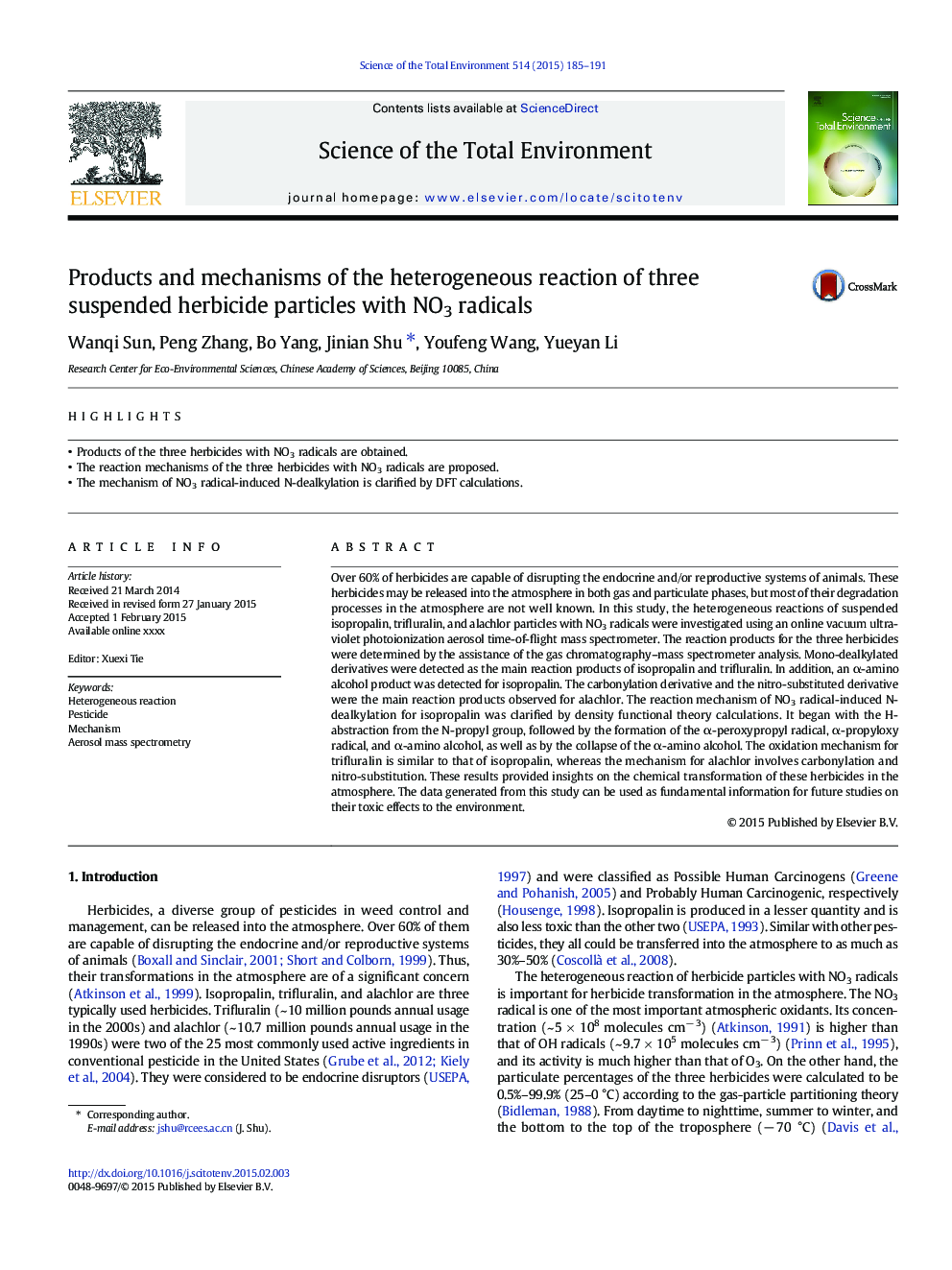| Article ID | Journal | Published Year | Pages | File Type |
|---|---|---|---|---|
| 6327033 | Science of The Total Environment | 2015 | 7 Pages |
Abstract
Over 60% of herbicides are capable of disrupting the endocrine and/or reproductive systems of animals. These herbicides may be released into the atmosphere in both gas and particulate phases, but most of their degradation processes in the atmosphere are not well known. In this study, the heterogeneous reactions of suspended isopropalin, trifluralin, and alachlor particles with NO3 radicals were investigated using an online vacuum ultraviolet photoionization aerosol time-of-flight mass spectrometer. The reaction products for the three herbicides were determined by the assistance of the gas chromatography-mass spectrometer analysis. Mono-dealkylated derivatives were detected as the main reaction products of isopropalin and trifluralin. In addition, an α-amino alcohol product was detected for isopropalin. The carbonylation derivative and the nitro-substituted derivative were the main reaction products observed for alachlor. The reaction mechanism of NO3 radical-induced N-dealkylation for isopropalin was clarified by density functional theory calculations. It began with the H-abstraction from the N-propyl group, followed by the formation of the α-peroxypropyl radical, α-propyloxy radical, and α-amino alcohol, as well as by the collapse of the α-amino alcohol. The oxidation mechanism for trifluralin is similar to that of isopropalin, whereas the mechanism for alachlor involves carbonylation and nitro-substitution. These results provided insights on the chemical transformation of these herbicides in the atmosphere. The data generated from this study can be used as fundamental information for future studies on their toxic effects to the environment.
Related Topics
Life Sciences
Environmental Science
Environmental Chemistry
Authors
Wanqi Sun, Peng Zhang, Bo Yang, Jinian Shu, Youfeng Wang, Yueyan Li,
